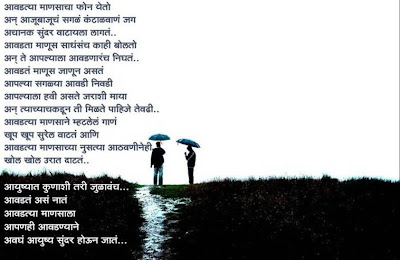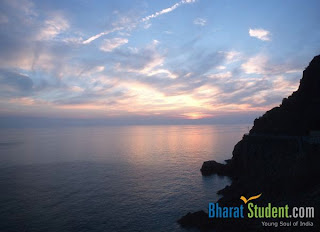Colaba Fort, Alibagh, Maharashtra
Built on a rock island near Alibag town, 112kms south of Mumbai, the Kulaba fort is an imposing structure, measuring roughly 275 metres from north to south and 100 metres from east to west. At low tide one can walk across to the fort. The height of the fort-wall varies from 6 to 8 metres at different places. It has a wide parapet with 17 bastions.
 Alwar Fort, Rajasthan..
Alwar Fort, Rajasthan.. The fort stands majestically 595 meters above the sea level and was constructed long before the rise of the Mughal Empire.
 Amer Fort, Jaipur, Rajasthan.
Amer Fort, Jaipur, Rajasthan. The Amer Fort, near Jaipur stands amidst wooded hills, with its forbidding ramparts reflected in the still waters of the Maota Lake below. One of the finest examples of Rajput architecture, it was the ancient capital of the Kachhawah rulers. The original palace was built by Raja Man Singh and additions were made later by Sawai Jai Singh.
 Bhongir Fort, near Hyderabad.
Bhongir Fort, near Hyderabad. Bhongir fort was built on an isolated rock by the western Chalukya ruler Tribhuvanamalla Vikramaditya VI. This name gradually became Bhuvanagiri and subsequently Bhongir. The fort is associated with the herioc queen Rudramadevi and her grandson Prataparudra's rule.
 Gingee Fort (Krishnagiri hill), near Chennai.
Gingee Fort (Krishnagiri hill), near Chennai. Gingee Fort also known as Chinji or Jinji in Tamil Nadu, India is one of the few surving forts in Tamil Nadu — which is much more popular for its temples than forts. It lies in Villupuram district, 160 km (100 mi) from the state capital, Chennai, and is close to the union territory of Pondicherry. So well fortified was this place that Shivaji ranked it as the "most impregnable fortress in India" and it was called the "Troy of the East" by the British.
 Gingee Fort (Rajagiri hill), near Chennai.
Gingee Fort (Rajagiri hill), near Chennai. Hamsatorana (Gateway), Warangal Fort, Warangal, AP.
Hamsatorana (Gateway), Warangal Fort, Warangal, AP. Kakatiya King Ganapati Deva and his daughter Rudramma built the fort during the 13th century. It is a mud and brick structure and is largely in ruins now, though some of the remains stand tall even today. These include four huge stone gateways and several exquisite pieces of sculpture. The fort has a temple and four gateways similar to those at Sanchi, reflecting a Buddhist influence. It has two walls; the circumference of the outer wall is 49 kms, the largest of its kind in India.
 Golkonda Fort, Hyderabad.
Golkonda Fort, Hyderabad. Golkonda is a ruined city and fortress 11 km west of Hyderabad. Built on a granite hill 120 meters high and surrounded by massive ramparts, the beginnings of the fort date to the 1143, when the Hindu Kakatiya dynasty ruled the area. The fort became the capital of a major province in the Sultanate and after its collapse the capital of the Qutb Shahi kings. Finally it fell into ruins after a siege and its fall to Mughal emperor Aurangazeb.
 Lohagarh Fort, Malvali, near Pune. (Look at the waterfalls)
Lohagarh Fort, Malvali, near Pune. (Look at the waterfalls) Lohagarh fort is 7kms south of Malavali station on the Pune-Mumbai railway line. Situated on a side range of Sahyadri mountains, it divides the basins of Indrayani and Pavana rivers.
 Rajgarh Fort, near Pune.
Rajgarh Fort, near Pune. Rajgarh possesses all the salient features of fort architecture which are typical to the Deccan region. Situated at a height of 1300 metres from sea-level, on one of the spurs of the Sahyadri Mountains known as Murum hill, it is about 35kms south-west of Pune. It was earlier held by the Nizamshahi and Adilshahi rulers. By 1648 AD, it was under the firm control of Shivaji, who gave it the new name Rajgarh, the king's fort. It was from Rajgarh that Shivaji went to meet Afzal Khan in 1659 AD. His departure to Agra return from there, both these historic events took place at Rajgarh.
 Rajgarh Fort, near Pune.
Rajgarh Fort, near Pune. Sinhagarh Fort, Pune
Sinhagarh Fort, Pune Sinhagad meaning Lion Fort, is located near Pune at a height of 800 metres. The fort's location has been strategically important since at least the 14th century and has been the site of many important battles. One of the more famous battles was the recapturing of the fort by Tanaji Malusare, a general for Shivaji, in March of 1670 in what has been called the Battle of Sinhagad. It was after this battle that the Kondhana fort was renamed Sinhagad after Tanaji, whose nickname was 'the lion' (Sinha). Having spearheaded the attack and fighting valiantly Tanaji's life was lost in capturing this important fort. More recently, during the 20th century, Lokmanya Tilak, the Indian freedom fighter, built a bungalow atop the fort and Gandhiji is said to have asked for water from it whenever he was imprisoned in the nearby town of Pune.
 Torna Fort, Pune.
Torna Fort, Pune. Torna is a massive fort near pune. In 1646, when Shivaji was 16, he launched his first military attack by capturing Torna, paving the way for the great empire. Its a favourite of the trekkers.
 Torna Fort, Pune.
Torna Fort, Pune.  Rock Fort, Trichi, Tamil Nadu
Rock Fort, Trichi, Tamil Nadu Rock Fort — a huge outcrop of rock, 83 metres high, which is the only outcrop in the otherwise flat land of the city. On top of the rock is the Ucchi Pillayar Koil, a temple dedicated to Vinayaka (Ganesha). The temple was used as a military fort by the Nayaks for some time. On the southern face of the rock are several beautifully carved cave temples of the Pallava period the 3rd century.B.C. The rock here is one of the oldest in the world-approximately 3.800 million years, older than the Himalayas.
 Vellore Fort, Vellore, Tamil Nadu.
Vellore Fort, Vellore, Tamil Nadu. Vellore fort, built during the rule of Chinna Bommi Nayak (1526 - 1595 AD) is one of the most perfect speciments of South Indian military architecture.One of the interesting features of this Vellore fort is that there is a Shiva temple - Jalakandeswarar, Christian church and Muslim mosque inside the fort.
 Visapur Fort, near Pune, Maharashtra
Visapur Fort, near Pune, Maharashtra.
Visapur Fort is larger and also higher than Lohgarh fort. Now in ruins, its history is closely linked with that of Lohagarh. Making use of its higher position, the British troops in 1818 AD set up their canons on Visapur and bombarded Lohagarh, forcing the Marathas to leave the fort.

 Kondapalli Fort, Vijaywada, Andhra Pradesh.
Kondapalli Fort, Vijaywada, Andhra Pradesh. Located 16 km away from Vijayawada was built by Prolaya Vema Reddy during 14th Century. Later came under the rule of the Qutubshahis who strengthened and eloborated by adding new structures. Near the fort, there is a Dargah of a Persian Saint, Gareeb Saheeb. Kondapally village is also famous for the world-renowned Kondapally Toys.
 Updated April 29, 2005 Michelin has showcased a potentially disruptive technology with significant ramifications for the future for mobility: an airless, integrated tyre and wheel combination dubbed the TWEEL (i.e. Tyre/WhEEL) . The Tweel promises performance levels beyond those possible with conventional pneumatic technology. The first commercial applications of the Tweel will be in lower-speed, lower-weight vehicles such as the iBOT mobility device and Segway's Concept Centaur. Designed by Segway-inventor Dean Kamen, the iBOT mobility device has the ability to climb stairs and navigate uneven terrain, offering mobility freedom impossible with traditional wheelchairs. Additionally, Segway's Concept Centaur, a prototype that applies self-balancing technology to a four-wheel device, has also been equipped with Tweel to increase its performance potential.
Updated April 29, 2005 Michelin has showcased a potentially disruptive technology with significant ramifications for the future for mobility: an airless, integrated tyre and wheel combination dubbed the TWEEL (i.e. Tyre/WhEEL) . The Tweel promises performance levels beyond those possible with conventional pneumatic technology. The first commercial applications of the Tweel will be in lower-speed, lower-weight vehicles such as the iBOT mobility device and Segway's Concept Centaur. Designed by Segway-inventor Dean Kamen, the iBOT mobility device has the ability to climb stairs and navigate uneven terrain, offering mobility freedom impossible with traditional wheelchairs. Additionally, Segway's Concept Centaur, a prototype that applies self-balancing technology to a four-wheel device, has also been equipped with Tweel to increase its performance potential.














































 Alwar Fort, Rajasthan..
Alwar Fort, Rajasthan.. 
















